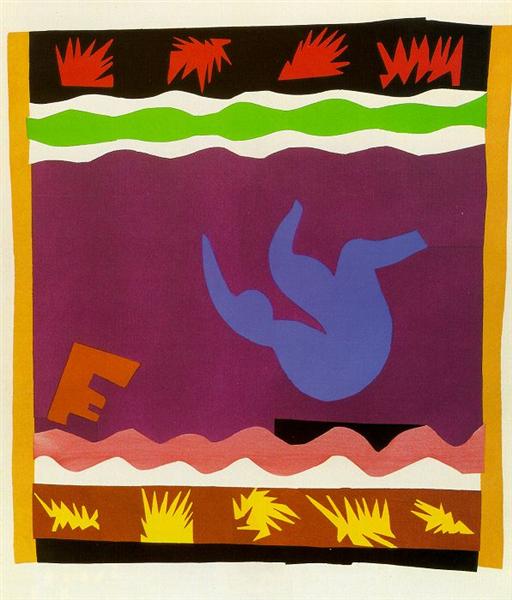Description
In the creation of Henri Matisse titled "The Toboggan" (1943), the master of Fauvism once again captures the essence of life through a filter of vibrant colors and simplified forms, recapturing the joy and vitality typical of his mature work. This painting invokes a sense of movement and dynamism consistent with its title, which translates to Spanish as "El Tobogán." The technique employed by Matisse in this work, which measures 52x60 cm, evidences his mastery in the use of color and line to generate a balanced and harmonious composition.
At first glance, "The Toboggan" seems to be a combination of abstract and figurative forms, intertwined in a visual dance. The strokes are markedly sharp, immortalizing human figures in seemingly relaxed attitudes, elevating simplicity to an almost poetic plane. We observe a human figure, whose profile sketched with a curved black line, appears to sit or slide nonchalantly. Matisse uses thick and defined contours, characteristics that refer to his cut-out style, a precursor to his famous "papiers découpés" or "cut paper."
Color in Matisse's work is paramount, and "The Toboggan" is no exception. Warm tones like red and orange predominate, contrasted with areas of deep blue and vibrant green. It is likely that these colors are not arbitrary, but a conscious choice to evoke certain emotions and sensations. Warmth seems to emanate a gentle energy, while cool colors anchor the composition, endowing it with depth and serenity. The balance between these tones generates a dynamic and, at the same time, restful atmosphere.
The composition of "The Toboggan" seems chaotic at first glance, but upon closer inspection, a well-thought-out structure is perceived. The main figure is accompanied by geometric shapes and fragments of color that suggest the environment, but do not attempt to be precise or realistic. This way of suggesting rather than affirming is an evolution of Fauvism towards an almost dreamlike territory, where visual reality is subordinated to expressive sensation.
Matisse, whose artistic genius encompasses painting, sculpture, and the art of paper cutting, demonstrates with this work his skill in communicating through his own revolutionary visual language. In "The Toboggan," his transition to an era of greater abstraction is glimpsed, while still rooted in a world where color and form are the primary tools to express the joy and complexity of human experience.
Exactly in 1943, in the midst of World War II, Matisse was dealing with health problems that physically limited him. Despite this, his spirit and creativity did not wane, drawing strength from weakness to continue his prolific artistic career. "The Toboggan" is palpable proof of his resilience and his ability to create beauty even in turbulent times.
This work by Matisse thus stands not only as an aesthetic exercise but as a testament to the indomitable capacity of art to transform and transcend adverse circumstances. It is, in short, an essential piece to understand the evolution of Matisse's style and to appreciate the emotional power of color and form.

